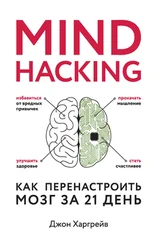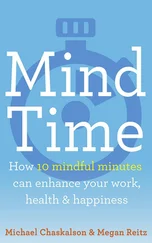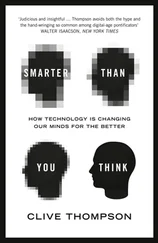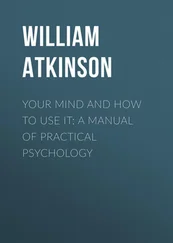A friend told him about a repetition technique, where you write down your positive mental loop fifteen times each day . His friend claimed that it worked for her. “The thing that caught my attention,” he related, “is that the process doesn’t require any faith or positive thinking to work.” Just the act of writing down your loop, she claimed, was enough to make it happen. In the spirit of self-experimentation, and figuring that he had nothing to lose but time, Adams gave it a try.
His first attempt was the straightforward:
> I, Scott Adams, will become rich.
In his books The Dilbert Future and How to Fail at Almost Everything and Still Win Big , he tells the story of making two ridiculously lucky stock picks that came to him out of the blue that year. 3Both were long shots, and both ended up being among the top market stories that year. He sold both stocks immediately, so he wasn’t rich, but the odds of an amateur picking two red-hot winners seemed unlikely.
He was less skeptical of the technique, but still not quite a believer. He decided to try the technique on another goal: getting an MBA from University of California at Berkeley. He had already taken the GMAT test that’s required for MBA applications, and scored in the 77th percentile: not good enough for UC Berkeley. So he began writing down this positive loop, fifteen times each day:
> I, Scott Adams, will score in the 94th percentile on the GMAT.
In the weeks leading up to the test, he bought GMAT study books and took plenty of practice tests. Each time he scored at about the 77th percentile. Still, he patiently wrote down his positive loop over and over, fifteen times each day.
The day of the test came. He took the test, feeling that he had scored about the same. He kept up the repetition technique as he waited for the GMAT test scores to arrive in the mail.
Finally, the test results came. He took the envelope out of the mailbox, opened it, and looked at the box he had pictured in his mind so many times before. He scored in exactly the 94th percentile . Adams recounts:
That evening, I sat in a chair with the GMAT results next to me, alternately staring at the wall and then staring at the ninety-four. I kept expecting it to change. It didn’t. And that night I knew that nothing would ever be the same for me. Everything I thought I knew about how the Universe was wired was wrong. 4
After earning his MBA, still working his day job, he began repeating a new loop. Each morning, before he left for work, he would get up at 4:00 a.m. to draw what would eventually become Dilbert . He also began to write this positive loop, fifteen times each day:
> I, Scott Adams, will become a syndicated cartoonist.
Despite a number of setbacks and rejections, and through a series of unlikely coincidences and lucky breaks, he eventually became a syndicated cartoonist. In fact, he’s arguably the most syndicated cartoonist alive today: Dilbert is published in 2,000 newspapers worldwide, in 65 countries, and in 25 languages.
With his analytical mind, Adams tried to reverse-engineer why this technique works in his books and in various posts to his blog. 5While he called his experiences with the repetition technique “fascinating and puzzling” as well as “wonderful and inexplicable,” he also was careful not to attribute them to “voodoo or magic.” Instead, he theorized about a logical explanation, even acknowledging that it might be nothing more than “selective memory” (perhaps he tried the repetition technique multiple times but only remembered his successes).
Adams points to research done by the psychiatrist Richard Wiseman in which he studied people who described themselves as “lucky.” It turns out they didn’t have any special powers except for one: they were more likely to notice opportunities. As Adams puts it, “Optimistic people’s field of perception is literally greater.” If you are methodically repeating your goals each day, you are more likely to notice the people and situations that can help you achieve those goals as they present themselves .
In my experience, this is absolutely true. When you repeat your goals daily, you set your expectations accordingly , and you begin viewing situations in a different light. If you’re repeating your goal of losing weight and someone invites you to a kickboxing class, you see it as an opportunity, not another way to embarrass yourself. If you’re repeating your goal of becoming an entrepreneur and they’re going through layoffs at your day job, you might see it as an opportunity to take the severance package and strike out on your own.
Adams also points out that repeatedly writing things down takes effort. Because you are investing time and energy in this small goal, you are committing yourself to investing time and energy in your larger goal. It is a way of kick-starting your mind into achieving your dreams, a kind of mental bootstrapping.
“My favorite explanation . . . also has the least evidence to support it,” Adams concludes, “i.e., none.” In this explanation, reality is so mind-bogglingly complex that our minds simply deliver a “highly simplified illusion that we treat as facts.” In this model of reality, the constant repetition of our goals may be a “lever” that we use to create some natural chain of cause and effect, but not a chain we are capable of understanding. So when the results come, by what appears to be luck or coincidence, it is simply by natural laws that are not yet fully understood. “While this view is unlikely to be correct,” he admits, “it has the advantage of being totally cool to think about.” (It is also similar to the ideas of Plato and The Matrix : a deeper reality lies behind this one.)
In the end, Adams’s repetition technique is one of the easiest self-experiments you can try: it’s totally free, and you have nothing to lose but your time. “Here’s a good test of your personality,” Adams concludes, in response to the skeptics. “If all of your friends told you that they win money on the slot machines whenever they stick their fingers in their own ears, would you try it? Or would you assume that since there is no obvious reason it could work, it’s not worth the effort?”
Repetition is Key
Repetition is key. Also, repetition is key.
One of the best parts about living in Boston, besides the wealth of technology talent, is sledding in the winter. It’s a thrill seeker’s dream, because you can sled as long as you want, as often as you want, and, unlike roller coasters or hallucinogens, it’s totally free .
I live near Wellesley College, the renowned all-women’s college that has produced notable alumni like Nora Ephron and Hillary Clinton. Wellesley has a sledding hill that is just phenomenally dangerous. It has (what feels like) an 85-degree incline, where you attain (what feels like) speeds of up to 75 miles per hour. On one side of the hill, a fifteen-foot oak branch spreads out across the snow, like a giant, deadly limbo stick. If you don’t press your body flat into the sled, you will be decapitated by the tree . It’s insane that they allow sledding on the hill at all, but even more insane is that the women of Wellesley College sled down the hill on plastic trays from the dining hall . (It’s funnier if you picture Hillary Clinton on a tray.)
As any sledding enthusiast knows, if you get to the hill after a fresh snow, it’s just clean powder. Then, as people sled down the hill, it creates grooves, or tracks, in the snow. After a few days the Wellesley students have built snow ramps and moguls at the bottom, so that sledding down one of these tracks will launch you into orbit.
A few days after a snow, you’ll find one set of snow tracks that take you under the Oak Tree of Death, and another set that will shoot you off the Ramps into Hyperspace. Even if you start your sled on another area of the hill, you end up locking into one of those two tracks.
Читать дальше
![Джон Харгрейв Mind Hacking [How to Change Your Mind for Good in 21 Days] обложка книги](/books/404192/dzhon-hargrejv-mind-hacking-how-to-change-your-min-cover.webp)











